
Animal
11:32, 06-Feb-2019
Animals' way home: Swan goose's arduous journey
By Ding Qian
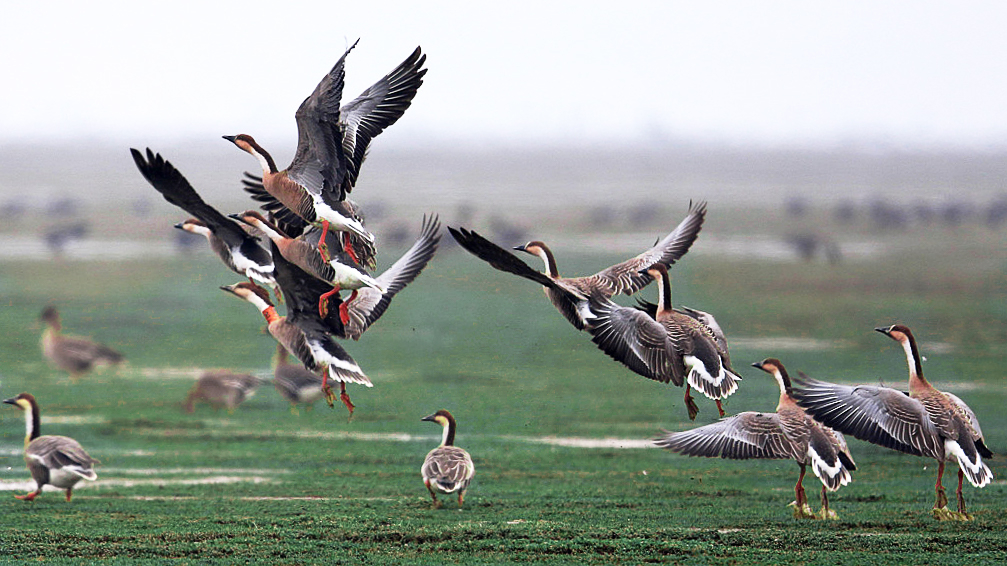
A traditional Mongolian folk song named “Swan Geese” has won millions of people's heart with its melodious tune and lyrics full of nostalgia.
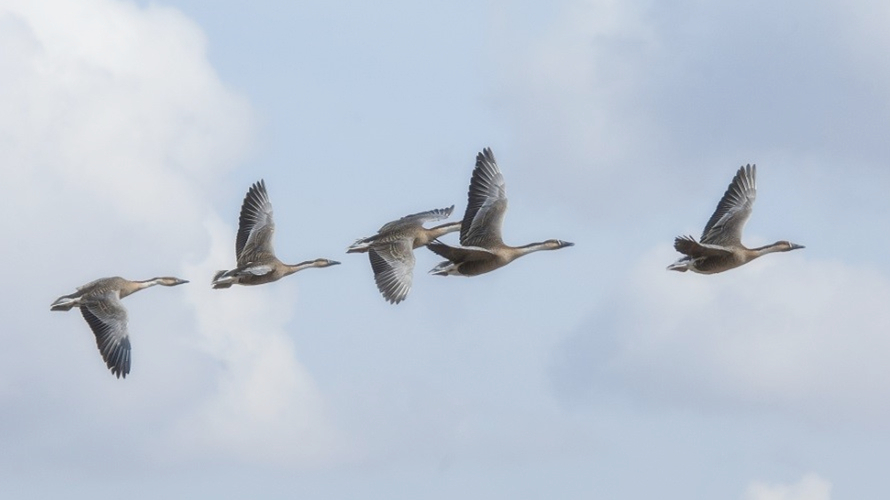
Swan geese are seen in Heilongjiang Province, northeast China. /VCG photo
Swan geese are seen in Heilongjiang Province, northeast China. /VCG photo
Swan goose (Anser cygnoides) is a large migratory bird. Its natural breeding site ranges from southeastern Russia to northeastern China. In winter, they fly to central and eastern China for food and a warmer environment. Then they return to their breeding sites around April and start to nest in May.
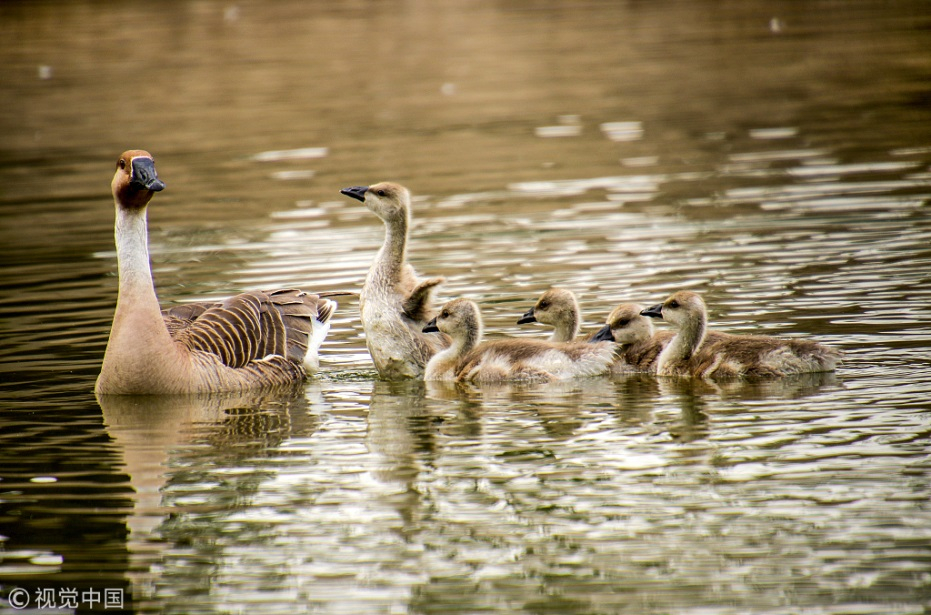
A swan geese family /VCG Photo
A swan geese family /VCG Photo
Unlike flamingos, swan goose has a relatively fixed migration route. As long as the natural environment doesn't undergo major changes, the geese are more inclined to migrate between natural breeding and wintering grounds. Researchers in the Zhalong Nature Reserve in northeastern China's Heilongjiang Province found that the bird rarely changes their stopovers or length of stay.

Swan geese stop in Shenyang City, northeast China while migrating to the south. /VCG Photo
Swan geese stop in Shenyang City, northeast China while migrating to the south. /VCG Photo
Due to such punctuality, swan geese were used in delivering letters in ancient China. The shape of flying swan geese also inspired the logo of China's postal system.

The logo of China Post is inspired by the shape of a flying swan goose. /VCG Photo
The logo of China Post is inspired by the shape of a flying swan goose. /VCG Photo
Like other migratory birds, swan geese cover thousands of miles in their annual migration. Various senses are thought to be combined when they navigate. They have magnetoreception which allows them to detect a magnetic field and perceive direction. They can also perceive direction through the position of the sun and stars, as well as familiar landmarks.
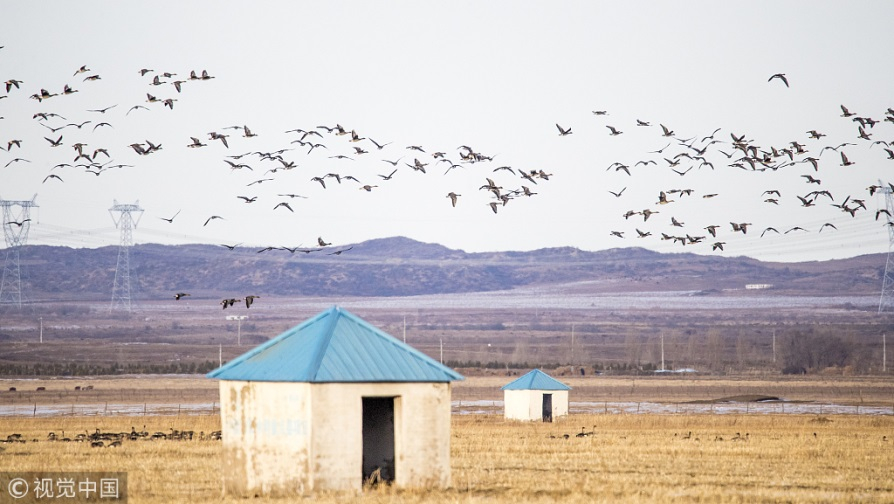
Flocks of swan geese are seen flying above grassland in Inner Mongolia, China. /VCG Photo
Flocks of swan geese are seen flying above grassland in Inner Mongolia, China. /VCG Photo
Taking a journey that covers such a long distance is risky and arduous. The unpredicted changing weather, the lack of enough food and the physical stress of long trip all make the journey challenging. The skyscrapers, communication towers, and power transmission lines in cities pose a danger to migrating birds, as they might collide with the structures and get killed.

Swan geese in Liaoning Province, northeast China /VCG photo
Swan geese in Liaoning Province, northeast China /VCG photo
In the past decades, a large number of wetlands and lakes have been occupied for industrial and agricultural use. Many geese can no longer find habitats suitable for nesting. Some birds even became "wild taste" for local residents.
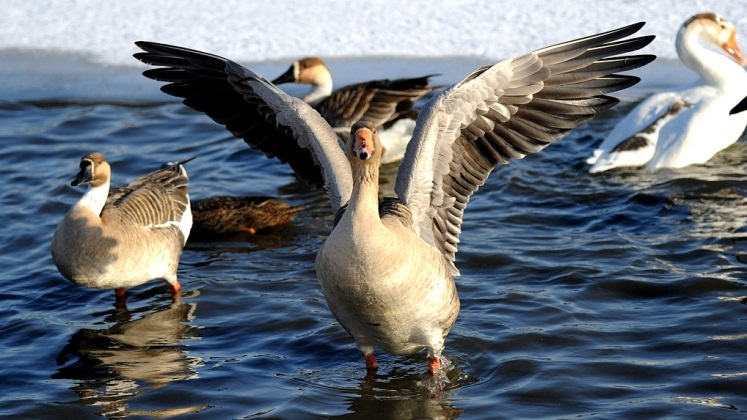
A swan goose spreading its wings /VCG photo
A swan goose spreading its wings /VCG photo
According to the International Union for Conservation of Nature (IUCN), the current population of swan geese is decreasing. It's listed as “Vulnerable” on IUCN Red List of Threatened Species.
However, nothing can stop them from taking the journey home. Every year flocks of migrating birds are seen flying from south to their northern home for nesting. Home is far, but it's where we grow. All we can do is to sustain the eco-system in the birding hotspots where large amounts of migratory birds gather and to restore their wetland habitats. We all have homes, so do birds.
(Cover image via VCG.)

SITEMAP
Copyright © 2018 CGTN. Beijing ICP prepared NO.16065310-3
Copyright © 2018 CGTN. Beijing ICP prepared NO.16065310-3